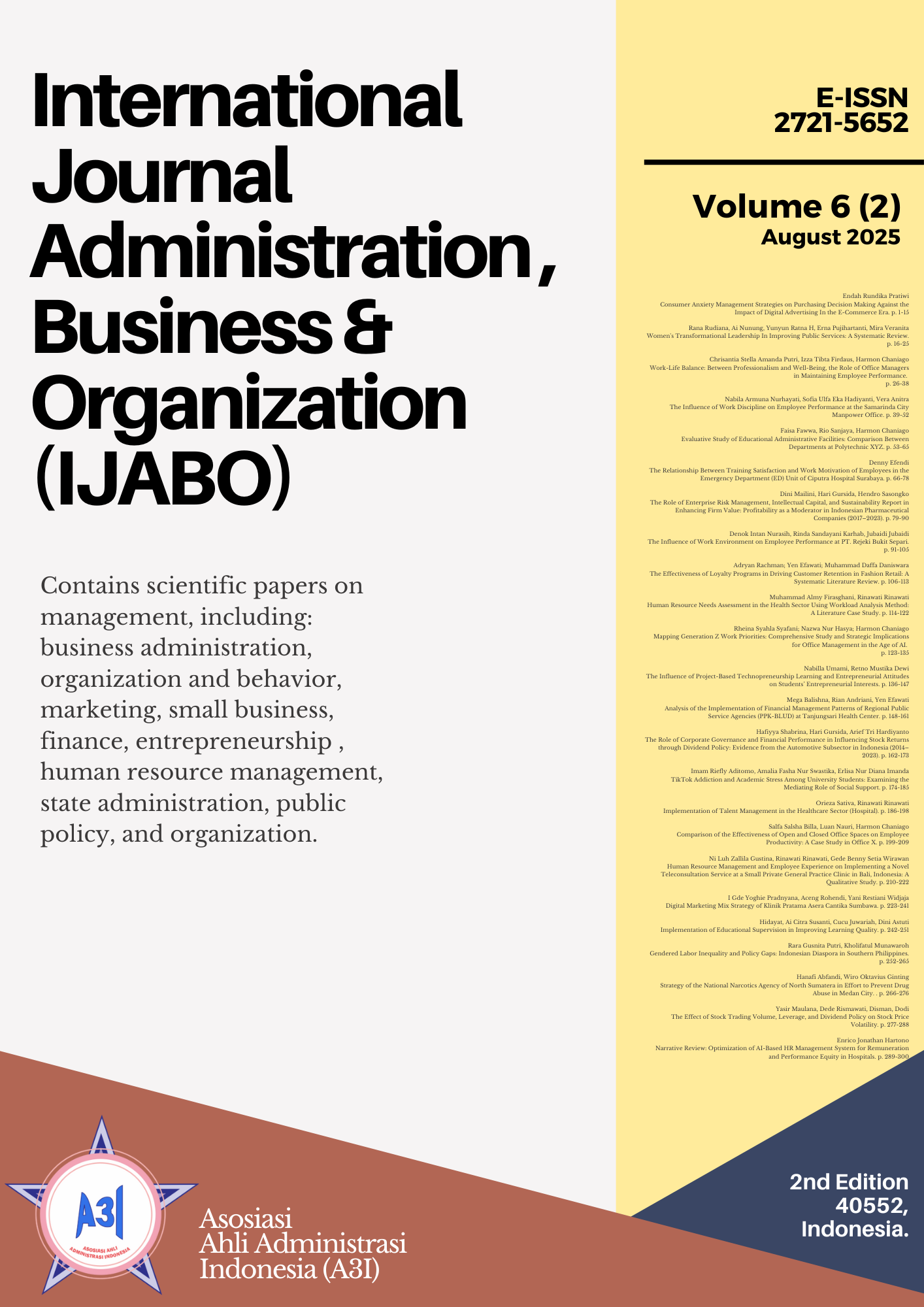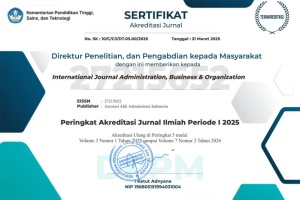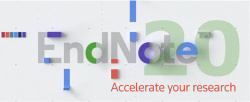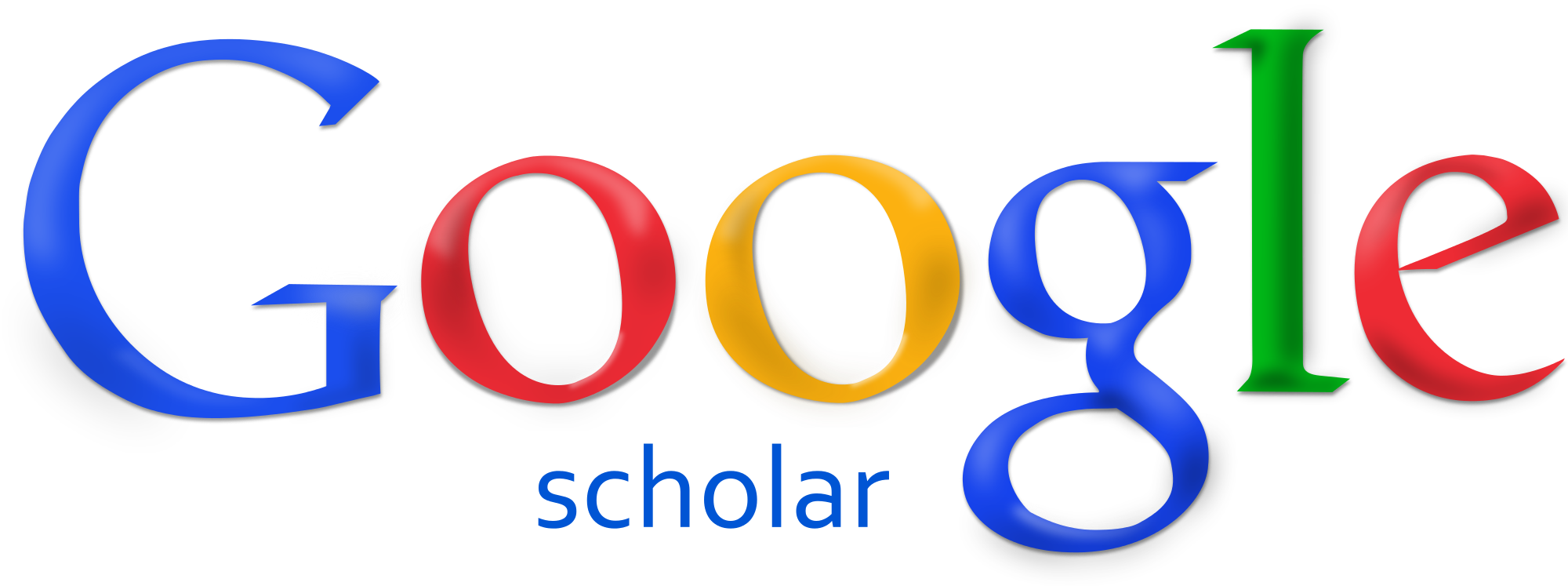Work-Life Balance: Between Professionalism and Well-Being, the Role of Office Managers in Maintaining Employee Performance
Abstract
This study explores how office managers contribute to maintaining employees’ work-life balance to help sustain their performance. Using a descriptive qualitative approach, data were collected through interviews, observations, and documentation. The findings highlight that office managers play a key role in fostering a work environment that supports both mental well-being and productivity. Theoretically, this research supports the perspective within human resource management that work-life balance is a critical factor in employee performance. On a practical level, the insights from this study can inform organizations in designing flexible work policies, managing workloads more effectively, and enhancing managerial support. What sets this study apart is its focus on the role of office managers, an area often overlooked compared to that of senior management in bridging professional demands with employees’ personal needs. By doing so, it contributes to a contextual understanding of how middle management can help promote employee well-being in today’s evolving workplace.
References
Beauregard, T. A., & Henry, L. (2009). Making the Link between Work-Life Balance Practices and Organizational Performance. Human Resource Management Review, 19, 9–22. https://doi.org/10.1016/j.hrmr.2008.09.001
Bregenzer Anita and Jimenez, P. (2021). Risk Factors and Leadership in a Digitalized Working World and Their Effects on Employees’ Stress and Resources: Web-Based Questionnaire Study. J Med Internet Res, 23(3), e24906. https://doi.org/10.2196/24906
Choudhury, P., Foroughi, C., & Larson, B. (2021). Work‐from‐anywhere: The productivity effects of geographic flexibility. Strategic Management Journal, 42, 655–683. https://doi.org/10.1002/smj.3251
Efawati, Y. (2024). Peran Budaya Digital dan Kreativitas terhadap Kinerja Karyawan: Apakah Krusial Bagi Perusahaan?. Jurnal Akuntansi Keuangan dan Bisnis, 17(2), 139-150.
Efawati, Y. (2020). The influence of working conditions, workability and leadership on employee performance. International Journal Administration, Business & Organization, 1(3), 8-15. https://doi.org/10.61242/ijabo.20.40
Greenhaus, J. H., & Allen, T. D. (2011). Work–family balance: A review and extension of the literature. In Handbook of occupational health psychology, 2nd ed. (pp. 165–183). American Psychological Association. https://doi.org/10.1037/10474-000
Haar, J., Russo, M., Sunyer, A., & Ollier-Malaterre, A. (2014). Outcomes of Work-Life Balance on Job Satisfaction, Life Satisfaction and Mental Health: A Study across Seven Cultures. Journal of Vocational Behavior, 85, 361–373. https://doi.org/10.1016/j.jvb.2014.08.010
Hanny Novita Ramadhan, Tungga Buana Irfana, Supriyanto Supriyanto, Djuni Thamrin, & Matdio Siahaan. (2024). Pengaruh Kesehatan Kerja Dan Beban Kerja Terhadap Work Life Balance. Jurnal Penelitian Ekonomi Manajemen Dan Bisnis, 3(2), 197–211. https://doi.org/10.55606/jekombis.v3i2.3491
Hasyim, H., & Bakri, M. (2025). Work-Life Imbalance: Its Impact on Employee Motivation and Well-Being. Economics and Digital Business Review, 6(1).
Kniffin, K., Narayanan, J., Anseel, F., Antonakis, J., Ashford, S., Bakker, A., Bamberger, P., Bapuji, H., Bhave, D., Choi, V., Creary, S., Demerouti, E., Flynn, F., Gelfand, M., Greer, L., Johns, G., Kesebir, S., Lee, S., & Vugt, M. (2020). COVID-19 and the Workplace: Implications, Issues, and Insights for Future Research and Action. American Psychologist, 76, 63–77. https://doi.org/10.1037/amp0000716
Kossek, E. E. (2016). Implementing organizational work–life interventions: toward a triple bottom line. Community, Work & Family, 19(2), 242–256. https://doi.org/10.1080/13668803.2016.1135540
Kossek, E., Valcour, M., & Lirio, P. (2014). The Sustainable Workforce. In Work and wellbeing (Vol. 3, pp. 295–319). https://doi.org/10.1002/9781118539415.wbwell030
Maslach, C., & Leiter, M. P. (2016). Burnout. In Stress: Concepts, Cognition, Emotion, and Behavior. In Stress: Concepts, Cognition, Emotion, and Behavior: Handbook of Stress (pp. 351–357). Elsevier. https://doi.org/10.1016/B978-0-12-800951-2.00044-3
Mazzola, J. J., & Disselhorst, R. (2019). Should we be “challenging” employees?: A critical review and meta-analysis of the challenge-hindrance model of stress. Journal of Organizational Behavior, 40(8), 949–961. https://doi.org/https://doi.org/10.1002/job.2412
Nurain, A., Chaniago, H., & Efawati, Y. (2024). Digital Behavior and Impact on Employee Performance: Evidence from Indonesia. Journal of Technology Management & Innovation, 19(3), 15-27.
Robbins, S. P., & Judge, T. A. (2015). Organizational Behavior (16th ed). Pearson Education.
Townsend, K., & Hutchinson, S. (2016). Line managers in industrial relations: Where are we now and where to next? Journal of Industrial Relations, 59, 002218561667116. https://doi.org/10.1177/0022185616671163
Copyright (c) 2025 Chrisantia Stella Amanda Putri, Izza Tibta Firdaus, Harmon Chaniago

This work is licensed under a Creative Commons Attribution-ShareAlike 4.0 International License.
Authors who publish in this journal agree to the following terms:
- The authors confirm that they are the authors of the submitted article, which will be published (online) in the journal IJABO (International Journal Administration, Business & Organization) by the Asosiasi Ahli Administrasi Indonesia (A3i), Bandung, Indonesia. The author’s name will be evident in the article. The publisher makes all decisions regarding the layout and distribution of the work.
- Authors guarantee that the work is their own original creation and does not infringe any statutory or common-law copyright or any proprietary right of any third party. In case of claims by third parties, authors commit themself to defend the interests of the publisher and shall cover any potential costs.
- Authors retain copyright and grant the journal the right of first publication, with the work simultaneously licensed under a Creative Commons Attribution-ShareAlike 4.0 International License (CC BY-SA 4.0). This license allows the redistribution and reuse of papers provided the authorship is properly credited.
- Authors can enter into separate, additional contractual arrangements for the non-exclusive distribution of the journal's published version of the work (e.g., posting it to an institutional repository or publishing it in a book), with an acknowledgment of its initial publication in this journal.
- Authors are permitted and encouraged to post their work online (e.g., in institutional repositories or on their website) prior to and during the submission process, as this can lead to productive exchanges and earlier and greater citations of published work.

















